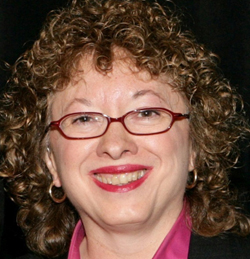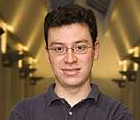But there are problems with the existing technology: balloon expansion damages tissue and blood flow through a stent frame can cause a thromboembolism (moveable blood clot).
As an expert in the aortic valve (he even wrote a respected textbook called “The Aortic Valve“), Dr. Mano Thubrikar, who holds a doctorate in biomedical engineering, was aware of these issues. Partly due to a chance encounter with a mother trying to find a cure for her son’s condition, Thubrikar left his 30-year career as a scientist and professor to create an artificial aortic valve that would work like a natural one.
The result is the Optimum Transcatheter Aortic Valve (Optimum TAV), which includes a self-expanding nitinol (nickel/titanium) frame. Thubrikar and his three co-founders — Deodatt Wadke, Ph.D., Nikhil Heble, Pharm.D., J.D. and Samir Wadke, MBA — started Thubrikar Aortic Valve in 2010, and are preparing for clinical trials later this year.
What inspired you to start Thubrikar Aortic Valve?
I did many years of research on the aortic valve. I wrote many papers, gave many lectures and wrote the book. I also worked on coronary artery disease. But I began to realize that I really needed to apply all that knowledge to a product.
About 10 or 15 years ago, a woman called to consult with me on a problem she was having with heart-valve disease. We set up a time for a discussion by phone, and when she called the second time, I was shocked to learn that she was actually calling on behalf of her [young] son, who had a congenital problem with his aortic valve.
We didn’t, and still don’t, have a good method of treating young people with aortic-valve disease. We can put in a mechanical heart valve, but we have to put them on anticoagulant medication forever. That’s not good for an athletic person; it’s a big lifestyle change.
When I talked to her about the state of affairs and the possibilities, she said, “Dr. Thubrikar, didn’t you write the book on the aortic valve? Why did you not design a valve that my son could use?”
So I left the university [Carolinas Medical Center and University of North Carolina at Charlotte], joined Edwards Lifesciences, a global heart-valve company, and started working on the next-generation surgical heart valve.
Over the two and a half years I was there, I realized that their goals and my goals didn’t quite match. So I left the company and joined the academic world again as head of the biomedical engineering program [at South Dakota School of Mines and Technology]. I decided to put my graduate students to work on the project to create the aortic valve. It took us three years to make a prototype, but we didn’t have a good frame. That took another year and a half. Then we had what we considered a perfect heart valve.
How is your valve different from what exists now?
I spent many years studying the natural aortic valve, understanding the logic and the reason behind the way nature created the valve. Our valve uses all the principles behind the design of the natural aortic valve.
Even though there are seven to nine heart valves on the market, they are copies of the others — all trading one problem for another. They haven’t been designed with the appropriate thought process. Everyone jumps on the bandwagon.
Our heart valve has an original design with a strong foundation. Not many people understand how a natural heart valve is designed.
How has your company grown?
We officially founded the company in 2010, in Rapid City, S.D. I left the university because I knew the company needed 100 percent of my attention. I was able to purchase equipment from the university.
We started with four co-founders. From the beginning, there have been three full-time employees: myself, Samir Wadke (who is my son-in-law; Deodatt Wadke is his father), and Sam Evans, one of my graduate students who I hired right away as a research engineer.
We have also had two physicians from Columbia University in New York — cardiologists and cardiac surgeons — as medical advisors from the beginning, so we started with seven people. Now we’ve added an eighth person, Marvin Woodall (former president of Johnson & Johnson Interventional Systems), as a business advisor.
Where are you in your development process?
We have finished 95 percent of our pre-clinical tests (table-top testing in the machine, chemical testing and implantation in animals, etc.); we only have a few ongoing animal tests, which should be finished in the next three months.
We’re now working to get the paperwork ready to do the first human implant, hopefully by October or November this year. We have three potential hospitals, but haven’t signed the contract at this point. All are outside the U.S.
How did you come to be located in Norristown?
Since my daughter [and Samir] live in Philadelphia and my son is a cardiologist in Long Island, we moved the company to Horsham in February 2013. In April 2013. we had a fire and the building burned down… Within three weeks we moved to Norristown.
There was nothing we could salvage; we lost major equipment, all the office files and paperwork. We had to re-create and purchase everything for the new place. It slowed us down by about four months.
Did you take advantage of any resources in getting the company off the ground?
We were fortunate that nearly 100 percent of our investments came from well-wishers, friends, businesses we worked with, and even people who knew what I was doing and invested without being asked. We raised $2 million that way, without difficulty.
One of our objectives in moving to Philadelphia was to get some government help. We applied to Ben Franklin Technology Partners of Southeastern PA and to BioAdvance. We hope that in the future there will be funding.
What has been the biggest challenge for you?
Aside from the fire, there haven’t been any major challenges yet. The biggest challenge is what lies ahead of us. We need to raise $2 million now in order to sign a contract with a hospital. So money is a challenge, now more than before.
What is the big differentiator for your company?
One is that we have done a lot of work with a small amount of money because of the experimental background I have. Where another company might spend $10 million, we’ve only spent $1.5 million so far. We could avoid wasting time and money because of my 30 years of experience in animal work.
Another is that our heart valve has an original design with a strong foundation.
What’s ahead for Thubrikar Aortic Valve?
We are just beginning to see the tip of the iceberg with this technology. It’s similar to the stent: When it started, they did it in 10 hospitals, then 50, then 5,000, then 50,000. Now any decent hospital anywhere in the world can use stents. That’s how this technology is going to be.
The coronary artery bypass surgery is only being used a small percentage of what they were before. No patient wants his chest to be cut open.
Writer: Susan L. Pena

http://www.tavi.us/
537 Foundry Road, Suite 2C Norristown, PA 19403


